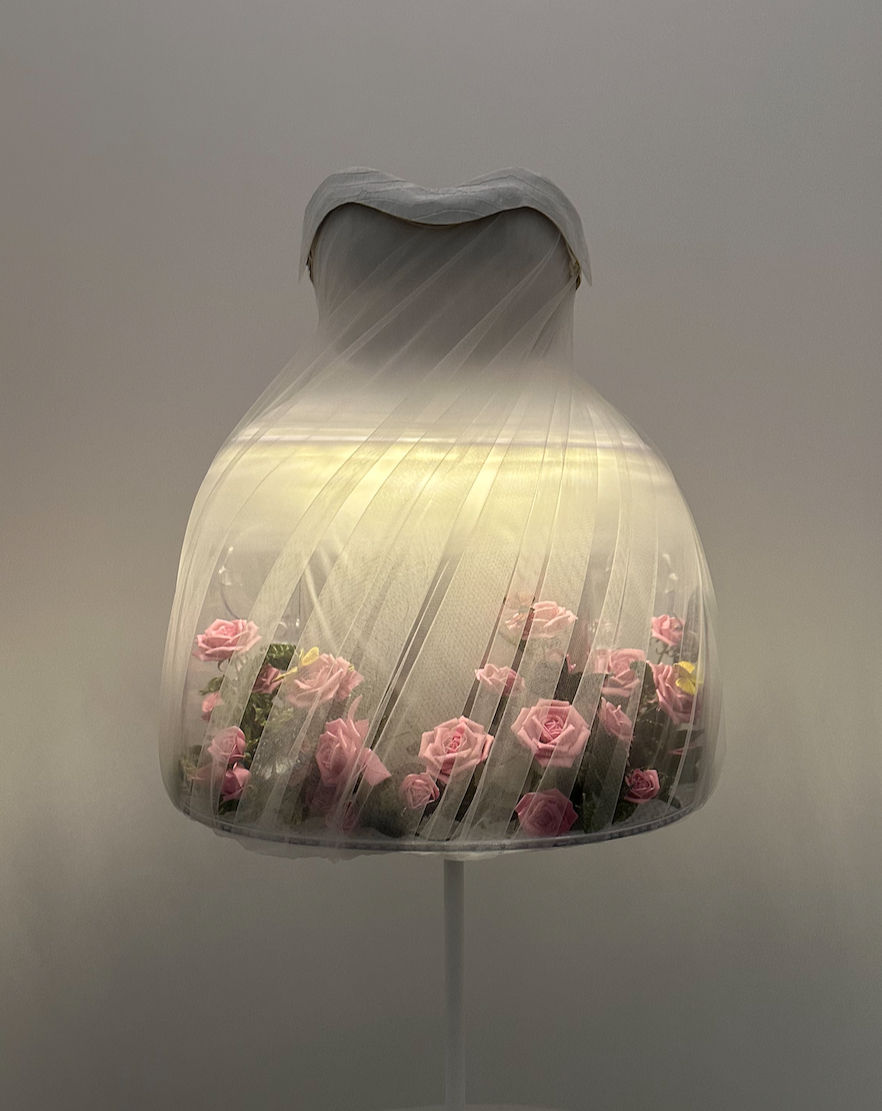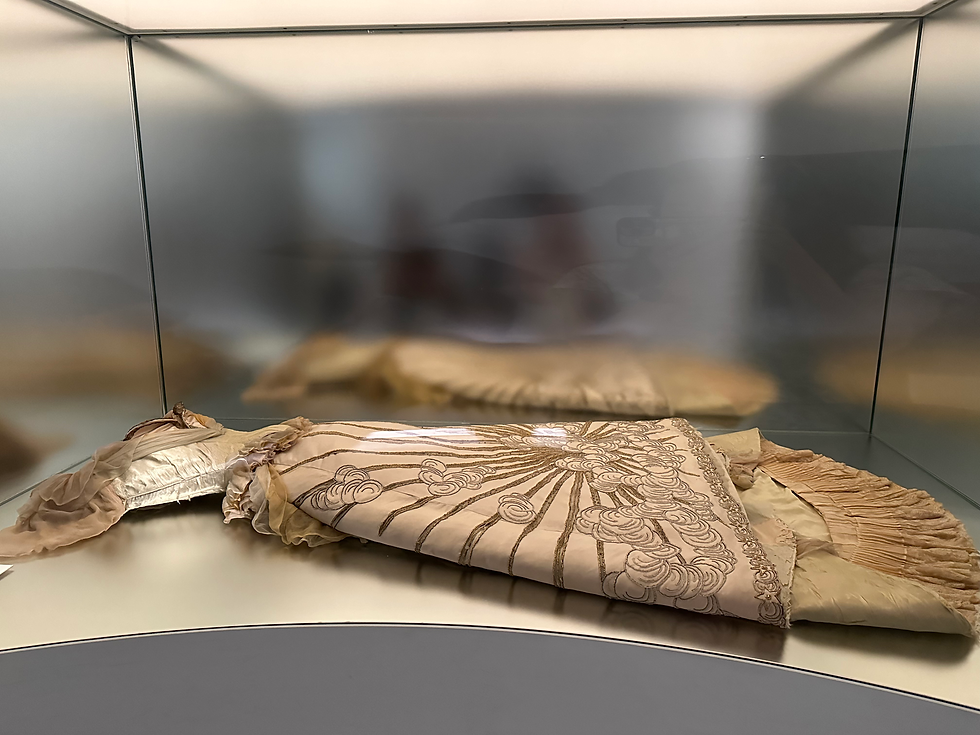Sleeping Beauties: 3D-ification & Animation
- Thea Hwang
- Jan 20
- 2 min read
An intention behind the Costume Institute’s 2024 Sleeping Beauties: Reawakening Fashion exhibit was to use innovative, scientific approaches to display fashion objects that must be safeguarded from the deterioration resulting from their exposure to light, crowds, movement and environmental contaminants. One curatorial solution to handling and showing delicate garments is to use technology to animate the wearing of them, allowing visitors to envision the garments as they were meant to be experienced, while 3D elements provide another dimension for appreciating fashion.

3D Embodiment. Three-dimensional elements may be added to clothing in many ways—embroidery, beading, draping, ruching. . .and, apparently, terrariums! Designer Jun Takahashi closed out his spring/summer 2024 runway show, entitled “Deep Mist,” with the wearable illumined terrarium dress seen on the left. The dress’ modish plastic enclosure was filled with silk roses and butterflies. Live butterflies actually fluttered inside the dress’ dome during the runway show and were later released, but following criticism from PETA (People for the Ethical Treatment of Animals), the designer pledged to never again use live animals in his creations. Even without moving butterflies, the terrarium brought life and dimension to the dress most unexpectedly and, I thought, earned this piece its place as the featured look on the exhibit’s publicity poster.

Animation. Some of the exhibited items were so fragile that they could not even be dressed on mannequins. Instead, they were shown laid flat in glass cases to prevent further deterioration—true sleeping beauties. While conservation-friendly, this display method meant that viewers would not experience the truest expression of these garments, which were intended to be seen worn on a body. The Charles Frederick Worth ball gown (ca. 1887), shown in sleeping beauty mode on the right, was digitally resurrected through a “Pepper’s Ghost” hologram. To achieve animation, the dress itself underwent digital scanning, photography, construction analysis, and pattern-making. This data was then “fitted” to a virtual avatar approximating the gown’s original wearer, Gilded Age socialite Carrie Astor. Since the garment was a ball gown, the movements of a professional dancer were motion captured and applied to the avatar, so that the Pepper’s Ghost could be shown dancing (see video below). Ironically, this digitization (and preservation) process required significant physical handling (and resulting damage) of the original garment. It’s an interesting ethical question whether producing a simulation of an item justifies the damage incurred in the process of making the simulation.
Sources. I drew extensively from the exhibition notes and catalog to supplement my own visit to Sleeping Beauties: Reawakening Fashion.




Comments